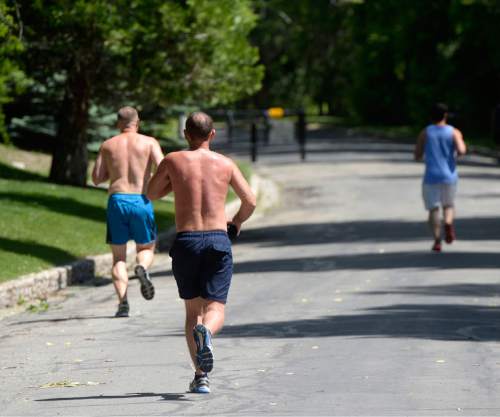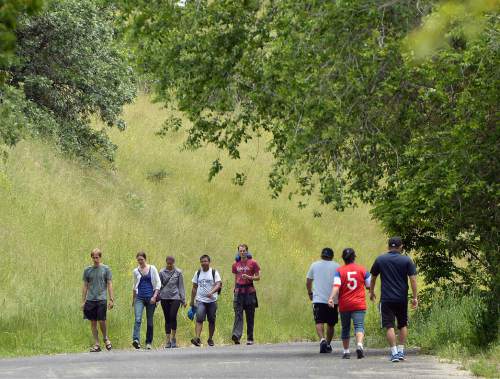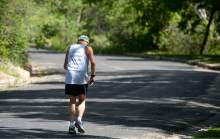This is an archived article that was published on sltrib.com in 2015, and information in the article may be outdated. It is provided only for personal research purposes and may not be reprinted.
Utahns are healthy and trim when compared to the populations of just about every other state. But experts say there's no way around it, the Beehive State still has a weight problem.
Only four states have a population with thinner waistlines, but it is hard to brag when roughly one in four Utahns is obese. The heaviest states are Mississippi and West Virginia, where 35.1 percent of the people are significantly overweight.
The most recent statistics come from 2013, and they show that 24.1 percent of Utahns answered a survey about their weight and height allowing researchers to determine if they met the technical definition of obesity (a body mass index of 30 or more).
So to make this clear, a big chunk of Americans are carrying around too many pounds. We know this because they are willing to admit it, but is everyone honest about their weight?
Rebecca Fronbergcq, with the Utah Department of Health, says what everyone intuitively knows.
"We do have people who overestimate their height and underestimate their weight," she says. Even so, she adds, a survey is the best method researchers have to gauge obesity and they have weighted — statistically speaking — the numbers for this very human of errors.
Overall, the nation has done a decent job of counting calories. Only six states had their obesity rates climb and, in Utah, the percentage actually ticked down a bit from 24.4 percent in 2011 to 24.1 percent in 2013.
After years of watching that percentage spike, health professionals such as Fronberg say this is welcome news, driven by a coordinated effort from the government, health-care providers and schools to highlight just how dangerous being obese can be. Think diabetes and heart trouble, limited mobility and shortened life spancq.
"It is more on the radar," she says. "People are more aware of making healthier choices."
With Utah's wealth of outdoor treasures, from the mountains in the north to the redrockcq in the south, it makes sense that people would be a bit more active than people in other states, where options may tend to be limited to gym equipment.
As proof, MapMyFitness, an exercise app with 22 million users in the United States, tracked the activity type and location of people throughout 2014. Utah came in sixth in the nation overall and second in running minutes, partly because of the number of people who enjoy trail running. The state also was in the top five for bicycling.
But Utah's geological attributes alone don't explain why the state has consistently had a lower-than-average rate of obesity. Physician Elizabeth Joycq, with University of Utah Health Sciences, says part of the answer comes from looking at the state's neighbors and analyzing what makes Utah's population different from many others.
The state is the youngest in the nation, and young people are less likely to be obese than older people. Utah has an overwhelmingly white population and minorities have higher obesity rates than white people. And the state has a low percentage of people in poverty, and there's no greater connection to obesity than low socioeconomic status. That's the "dollar-menu effect" in which cheap food tends to be the least nutritious.
So it makes sense that Utah's poorer areas, such as Brigham City and Magna, have high obesity rates at or near 40 percent, while more well-to-do areas, like Salt Lake City's Avenues and all of Summit County, are around 12 percent.
Joy also threw out that Utahns are less likely to drink alcohol than people in other states. Alcoholic drinks tend to be "empty calories." On the flip side, the Hershey candy company says Utahns tend to eat more sweets than people in any other state.
Joy says if Utahns want to drop some weight, they need to move more. When talking to kids, she brings up 5-2-1-0, which stands for five servings of fruits and veggies a day, only two hours of screen time (either a TV, computer or smartphone),cq one hour of physical activity and no sugar-sweetened drinks. She says the same formula would work for adults.







